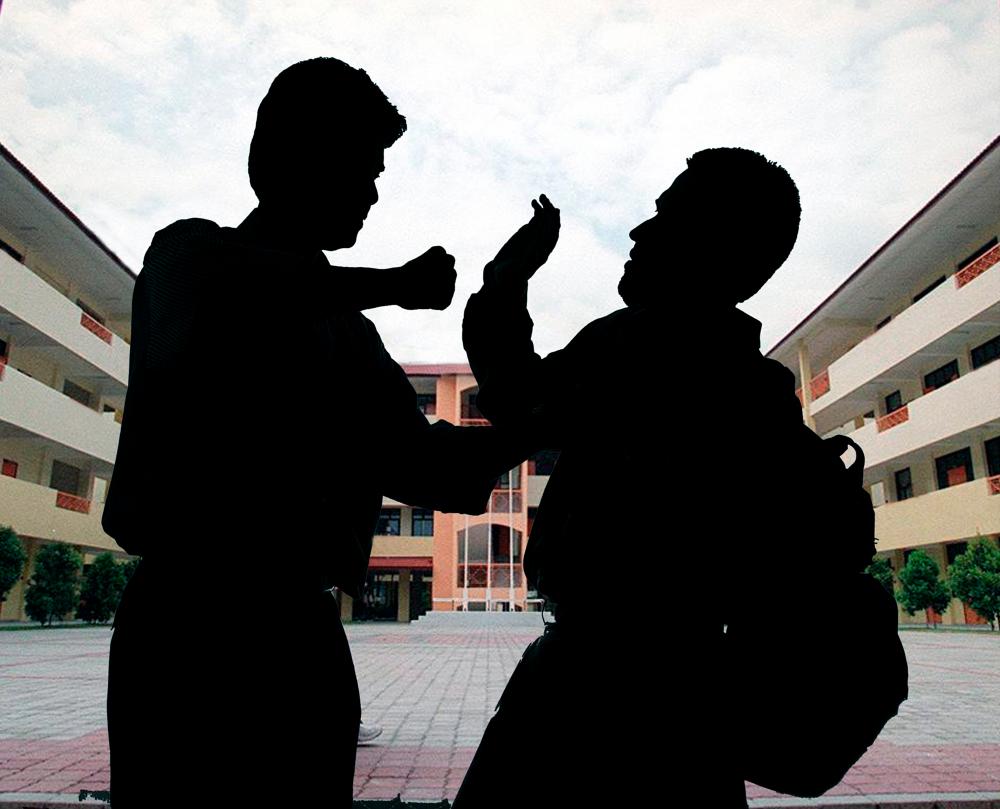DISCIPLINARY and bullying incidents in schools, especially in Malaysia, have risen recently. According to the ministry’s data over the past three years, there were 326 reported cases in 2021, 3,887 cases in 2022 and 4,994 cases as of October 2023.
These alarming statistics have left parents worried about their children’s safety and well-being in school. Despite the various methods employed to address the issue, there has been no reduction in bullying cases.
One contributing factor is the shortage of trained psychologists or counsellors in schools. Additionally, the tendency to conceal such incidents is another key element exacerbating the problem.
It is disheartening to witness some individuals, whether fellow students or educators, adopting a stance of turning a blind eye as if the distressing events unfolding before them are inconsequential.
There is a persistent culture of pretending that nothing is wrong, a collective silence that unintentionally makes the misery of individuals targeted by bullying worse.
Teachers who are entrusted with safeguarding the safety and well-being of students often face fear. This fear stems from the notion that taking strong action will inadvertently intensify the problem or expose them to personal threats.
The fear of repercussions can perpetuate an environment where bullying goes unchecked. Breaking this cycle demands not only resolve but also promoting a broader cultural shift within the school community. This shift should focus on transparency, empathy and a collective commitment to safeguarding the safety and emotional well-being of all children.
With the introduction of artificial intelligence (AI), this problem can be reduced or resolved. If applied professionally and ethically, AI can help address disciplinary and bullying incidents in schools.
1. CCTV cameras
AI-powered cameras can be installed in common areas such as playgrounds, hallways and entrances to monitor student behaviour and detect potential bullying incidents. Smart sensors can detect unusual noises or movements in areas where bullying can occur, such as restrooms or empty classrooms.
2. Facial recognition
This technology can be used to limit access to certain areas of the school to authorised personnel only, reducing the likelihood of unauthorised individuals entering the premises. In the event of a bullying incident, AI-powered facial recognition can help identify the individuals involved and track their movements.
3. Behaviour analysis
AI can analyse audio and video footage to detect aggressive or unusual behaviour, raising alerts to school staff. AI can also analyse written content, such as messages or social media posts, to identify bullying-related keywords and sentiments, enabling timely intervention.
4. Alert tools
AI systems can generate real-time alerts for teachers, administrators or parents when bullying behaviour is detected or suspected in a particular area of the school. It can also trigger emergency response procedures when severe incidents are identified, ensuring swift action to protect students.
5. Preventive education
AI-driven chatbots can provide students with a safe and confidential space to discuss their concerns, seek advice or report bullying incidents. It can deliver personalised anti-bullying educational content to students, promoting awareness and empathy. These virtual assistants can offer students immediate access to support resources whenever they need them.
6. Data analytics
AI can analyse historical data to identify patterns and trends related to disciplinary issues and bullying, helping schools implement proactive measures. By analysing data, AI can pinpoint hotspot areas or times of the day when disciplinary issues are more likely to occur, allowing schools to allocate resources accordingly. Armed with this information, school administrators can strategically allocate resources, such as additional supervision or security personnel, to these identified areas or times, thereby deterring potential incidents and ensuring a safer environment for students.
7. Resource allocation
AI can assist schools in predicting when and where disciplinary issues may arise, facilitating the effective allocation of staff and resources.
However, it is crucial to address ethical and privacy considerations when adopting AI in schools. This includes ensuring privacy and obtaining consent for the collection and use of student data, implementing strict access restrictions to prevent the misuse of surveillance technology such as face recognition, regularly auditing AI systems to minimise bias and errors, and maintaining transparency with students, parents and staff regarding the use of AI for disciplinary and safety purposes.
AI can play a role in addressing disciplinary and bullying issues in schools but it needs to be used responsibly, following legal guidelines and prioritising the creation of a safe and inclusive learning atmosphere. Ultimately, the aim should be to establish a secure and supportive environment for all students.
The debate of whether professionally qualified persons should handle bullying instances in schools can be complex. While these experts bring experience, impartiality and secrecy to the table, their involvement must be weighed against resource constraints, integration challenges and the pivotal role of teachers and school personnel in identifying and responding to bullying.
A balanced approach that leverages the capabilities of internal and external resources appears to be the most practical solution. By utilising AI technology, schools can potentially enhance their ability to detect, monitor and address bullying incidents promptly and effectively.
While integrating AI may entail significant expenses, it can be implemented in schools where bullying is prevalent.
The writer is a professor at the College of Computing and Informatics at Universiti Tenaga Nasional, a fellow of the British Computer Society, a chartered IT professional, a fellow of the Malaysian Scientific Association, a senior IEEE member and a professional technologist at MBOT Malaysia. Comments: letters@thesundaily.com









